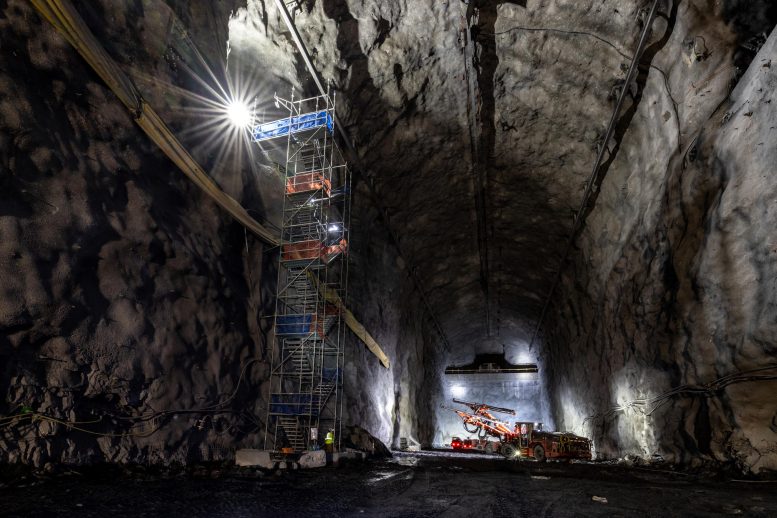
Construction workers created two colossal caverns, each more than 500 feet long and about seven stories tall, for the gigantic particle detector modules of the Deep Underground Neutrino Experiment, hosted by Fermilab. A third cavern will house utilities for the operation of the detector. Credit: Matthew Kapust, Sanford Underground Research Facility
Completion of massive underground caverns for the Deep Underground Neutrino Experiment (DUNE) paves the way for groundbreaking neutrino research, involving an international team of over 1,400 scientists and engineers.
Excavation workers have finished carving out the future home of the gigantic particle detectors for the international Deep Underground Neutrino Experiment. Located a mile below the surface, the three colossal caverns are at the core of a new research facility that spans an underground area about the size of eight soccer fields.
Hosted by the U.S. Department of Energy’s Fermi National Accelerator Laboratory, DUNE scientists will study the behavior of mysterious particles known as neutrinos to solve some of the biggest questions about our universe. Why is our universe composed of matter? How does an exploding star create a black hole? Are neutrinos connected to dark matter or other undiscovered particles?
The Role of Neutrino Detectors
The caverns provide space for four large neutrino detectors—each one about the size of a seven-story building (see 2-minute animation below). The detectors will be filled with liquid argon and record the rare interaction of neutrinos with the transparent liquid.
DUNE will help provide a clearer picture of the universe and how it works. DUNE scientists will pursue three major science goals: find out whether neutrinos could be the reason the universe is made of matter; look for subatomic phenomena that could help realize Einstein’s dream of the unification of forces; and watch for neutrinos emerging from an exploding star, perhaps witnessing the birth of a neutron star or a black hole.
Trillions of neutrinos travel through our bodies each second without us even knowing it. With DUNE, scientists will look for neutrinos from exploding stars and examine the behavior of a beam of neutrinos produced at Fermilab, located near Chicago, about 800 miles east of the underground caverns. The beam, produced by the world’s most intense neutrino source, will travel straight through earth and rock from Fermilab to the DUNE detectors in South Dakota. No tunnel is necessary for the neutrinos’ path.
Excavation and Construction Achievements
“The completion of the excavation of these enormous caverns is a significant achievement for this project,” said U.S. Project Director Chris Mossey. “Completing this step prepares the project for installation of the detectors starting later this year and brings us a step closer towards fulfilling the vision of making this world-class underground facility a reality.”
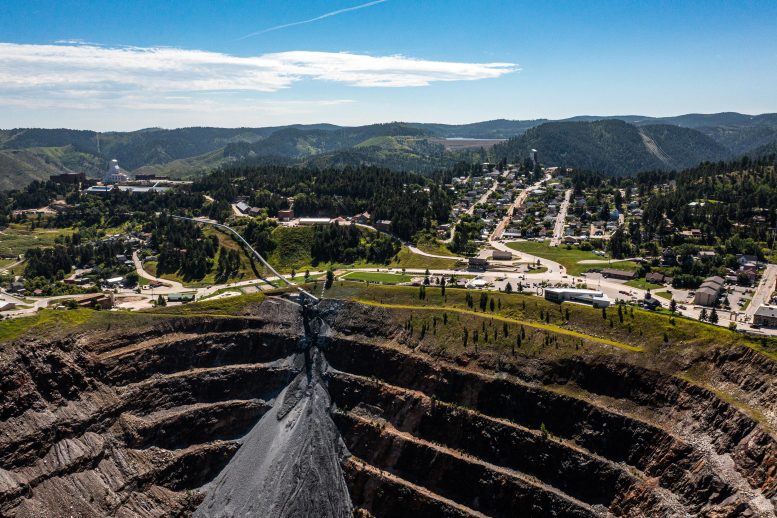
A conveyor carried almost 800,000 tons of rock, excavated a mile underground, into the Open Cut in Lead, South Dakota. Credit: Stephen Kenny, Sanford Underground Research Facility
Engineering, construction, and excavation teams have been working 4,850 feet below the surface since 2021 at the Sanford Underground Research Facility, home of the South Dakota portion of DUNE. Construction crews dismantled heavy mining equipment and, piece by piece, transported it underground using an existing shaft. Underground, workers reassembled the equipment, and workers spent almost two years blasting and removing rock. Close to 800,000 tons of rock were excavated and transported from underground into an expansive former mining area above ground known as the Open Cut.
Future Steps and Safety Records
Workers will soon begin to outfit the caverns with the systems needed for the installation of the DUNE detectors and the daily operations of the research facility. Later this year, the project team plans to begin the installation of the insulated steel structure that will hold the first neutrino detector. The goal is to have the first detector operational before the end of 2028.
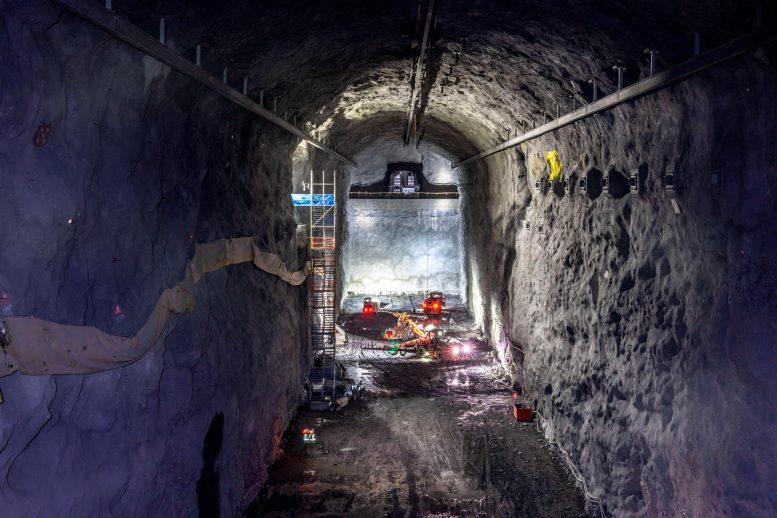
A bird’s eye view of one of the large caverns in South Dakota, about the height of a seven-story building. Large particle detectors for the Deep Underground Neutrino Experiment will be placed here to study the behavior of neutrinos. The DUNE detectors are expected to be the largest underground cryogenic system in the world. Credit: Matthew Kapust, Sanford Underground Research Facility
“The completion of the three large caverns and all of the interconnecting drifts marks the end of a really big dig. The excavation contractor maintained an exemplary safety record working over a million hours without a lost-time accident. That’s a major achievement in this heavy construction industry,” said Fermilab’s Michael Gemelli, who managed the excavation of the caverns by Thyssen Mining. “The success of this phase of the project can be attributed to the safe, dedicated work of the excavation workers, the multi-disciplined backgrounds of the project engineers and support personnel. What a remarkable achievement and milestone for this international project.”
DUNE scientists are eager to start the installation of the particle detectors. The DUNE collaboration, which includes more than 1,400 scientists and engineers from over 200 institutions in 36 countries, has successfully tested the technology and assembly process for the first detector. Mass production of its components has begun. Testing of the technologies underlying both detectors is underway using particle beams at the European laboratory CERN.


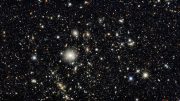



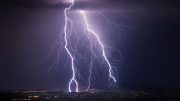

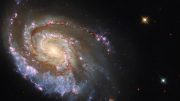
The Colossal Caverns Excavated Deep Underground of pseudo scientific theory is forever filled with the selfish desires of pseudo scholars.
Science must follow mathematical rules. For example, the Standard Model (SM) is considered to be one of the most significant achievements of physics in the 20th century. However, the magnetic moment of μ particle is larger than expected, revealed by a g-2 experiment at Fermilab, suggests that the established theory (such as SM) of fundamental particles is incomplete. Furthermore, the SM omitting gravity, it not involved the time problem and when the particle movement starts. Mathematics is the foundation of science. Physics must respect the scientific nature of mathematics and mathematical models. The SM must be based on mathematical models in order to be scientific, convincing, and in line with natural laws.
I hope researchers are not fooled by the pseudoscientific theories of the Physical Review Letters (PRL), and hope more people dare to stand up and fight against rampant pseudoscience.
The so-called academic journals (such as Physical Review Letters, Nature, Science, etc.) firmly believe that two high-dimensional spacetime objects (such as two sets of cobalt-60) rotating in opposite directions can be transformed into two objects that mirror each other, is a typical case of pseudoscience rampant.
If researchers are really interested in Science and Physics, you can browse https://zhuanlan.zhihu.com/p/643404671 and https://zhuanlan.zhihu.com/p/595280873.
Somebody messed up in titling the YouTube video! It should be “Stanford,” NOT “Sanford (and sons)”!
My mistake! Apparently it actually IS named “Sanford.” Although, I’m not able to readily find out if that is the name of a benefactor or an acronym. Perhaps someone could enlighten me.